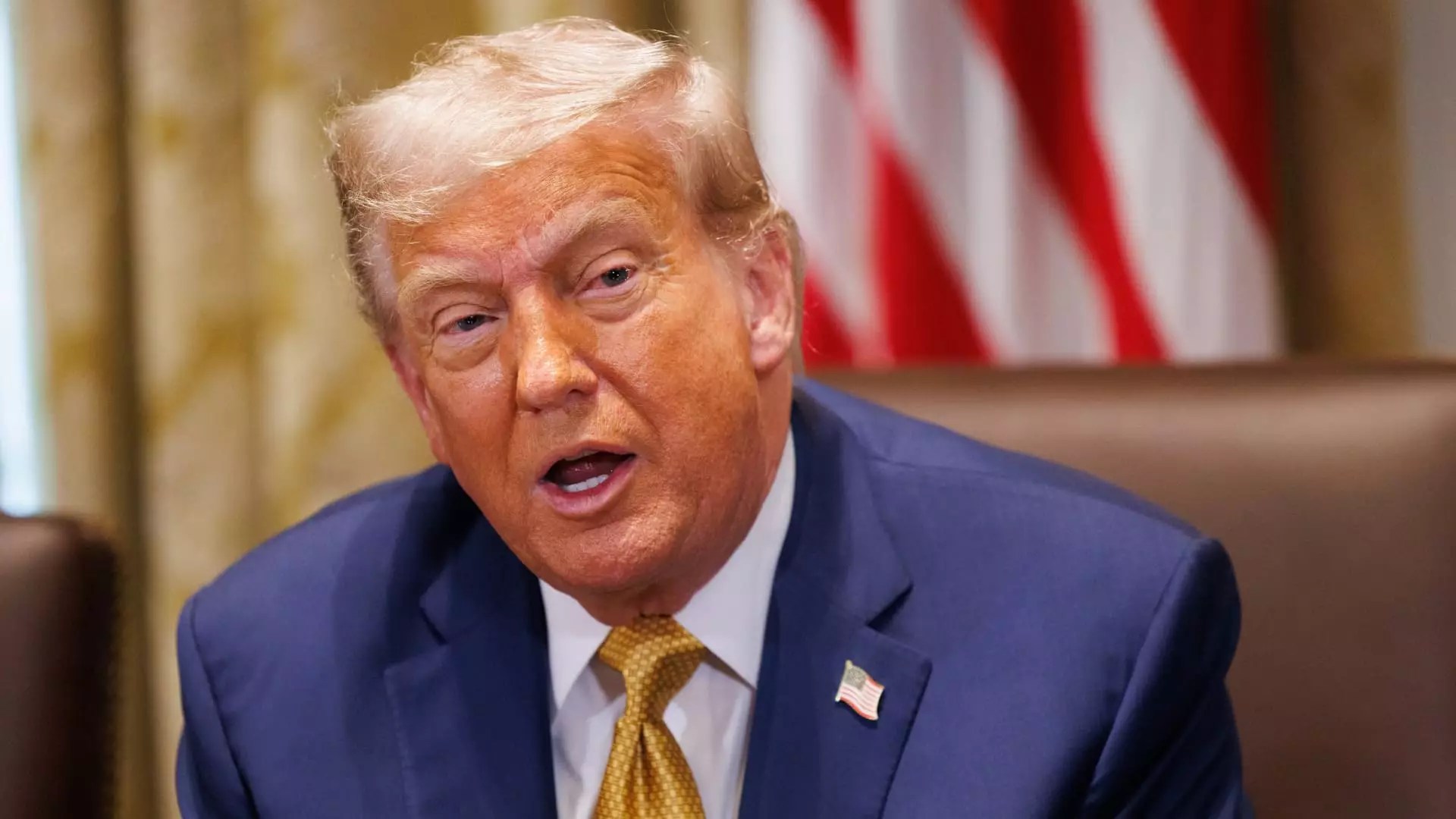President Donald Trump’s recent warning of imposing up to 200% tariffs on imported pharmaceuticals marks a pivotal moment in America’s economic and health policy landscape. While at first glance, it could be dismissed as mere protectionist rhetoric, a deeper analysis reveals a strategic move rooted in a complex balance of national security, economic sovereignty, and industrial revival. This proposed tariff escalation, if executed, signals a decisive shift towards reasserting American dominance over critical supply chains—a move that is both daring and fraught with peril.
However, considering Trump’s historical tendency to delay or modify tariff implementations, this stance appears as much a tactical leverage as a concrete plan. The promise of a phased approach—allowing domestic producers a year or more to prepare—could be viewed as an attempt to create pressure without immediate economic fallout. Yet, this also risks sowing uncertainty among investors, consumers, and pharmaceutical giants, potentially destabilizing an already fragile industry.
The Economic and Industry Impact: A Double-Edged Sword
Pharmaceutical companies have long relied on global supply chains to keep costs manageable and innovation flowing. Imposing tariffs of such magnitude threatens to upend this delicate equilibrium. While President Trump’s supporters argue that tariffs serve as an incentive for manufacturing to revert to American soil, the reality is far grimmer. Ramping up tariffs risks driving up drug prices—not just for consumers but also for the entire healthcare ecosystem—and could hinder ongoing research efforts due to increased financial burdens.
The industry’s response underscores this concern. Major players like Eli Lilly and Johnson & Johnson have already increased investments domestically, aiming to cushion against uncertainties. Yet, tariffs at this scale would challenge even their capacity to maintain affordable drug development and production. Moreover, the notion that tariffs could be a catalyst for reshoring is naive; pharmaceutical manufacturing involves complex, sensitive processes that cannot be easily relocated without sacrificing quality or skyrocketing costs.
Furthermore, these policies risk inviting retaliatory measures from trading partners. Heightened tariffs may provoke a trade war that extends beyond pharmaceuticals, impacting other vital sectors and destabilizing the broader economy. Given the interconnectedness of global markets, the danger lies in a tit-for-tat escalation that could diminish America’s competitive edge rather than restore it.
The Political Calculus: National Security or Economic Sabotage?
President Trump’s invocation of national security to justify trade measures is not new, but targeting pharmaceuticals underscores a crucial shift in focus. The medicines we take for granted are not only essential but also increasingly intertwined with geopolitical considerations. The recent Section 232 investigation hints at a desire to circumscribe reliance on foreign manufacturing—a strategy rooted in a realist outlook on sovereignty and global influence.
Yet, employing tariffs as a tool to bolster domestic industries may overlook the complexity of pharmaceutical R&D and manufacturing. Unlike steel or semiconductors, medicine development is an intricate, globalized process that depends heavily on international collaboration, expert labor, and supply chain diversity. Disrupting these chains can inadvertently weaken, rather than strengthen, national security.
Moreover, the pharmaceutical industry is already under immense pressure from regulatory, pricing, and R&D policy changes. Adding tariff-induced cost hikes could damage their global competitiveness. It’s an aggressive move that puts a political win above pragmatic policy, risking long-term harm to the innovation ecosystem that has historically benefited from open markets and international cooperation.
The Center-Right Perspective: A Risk Worth Taking for a Sovereign Future?
From a center-right liberal perspective, the push for tariffs possesses both merits and perils. Advocates argue that fostering American manufacturing aligns with a broader goal of economic sovereignty—reducing dependency on foreign suppliers in critical sectors, especially amid geopolitical tensions. Reshoring pharmaceutical production could serve national interests by creating jobs and stimulating domestic innovation.
However, the scale and immediacy of such tariffs must be scrutinized. Overly aggressive measures risk alienating allies, provoking retaliatory tariffs, and ultimately harming American consumers and businesses. A measured approach—targeted incentives, smarter trade policies, and strategic investment—may better serve the overarching goal of revitalizing domestic industry without courting economic isolation or inflationary pressures.
In the end, a balanced policy that safeguards national security while maintaining global competitiveness offers the most sustainable pathway. Relying solely on tariffs risks turning a strategic economic move into national self-sabotage. A nuanced, pragmatic approach, embracing both free trade and strategic protectionism, would echo the middle-road ethos that seeks to preserve innovation, ensure affordability, and strengthen American industry—without tipping into reckless economic warfare.


Leave a Reply